Are you suffering from shoulder pain, when sitting or sleeping? These Mobility Drills, Stretches, and Exercises will help!
In my clinical experience shoulder pain can stem from chronic stress and strains or acute injuries to the shoulder joint (glenohumeral joint) or the supporting joints or even the cervical or thoracic spine. Some people will have pain right in the shoulder joint, or close by, while others have more generalized pain and stiffness in and around the shoulder, including the spine.
If you have a known history of trauma to the shoulder joint, say a dislocation, then you may have irreparable damage to muscles, tendons, and ligaments. Eventually, this problem may have to be fixed with surgery. However, in most cases long before someone needs surgery there are many exercises and stretches one can do to help rehab, strengthen and stabilize the shoulder to help ease the potential pain and stiffness in the joint.
I actually find the majority of people with shoulder pain have never experienced an acute trauma but do repetitive movements over and over or have very poor posture which compromises the shoulder joint and can lead to damage through excessive wear and tear. Non-traumatic rotator cuff tears are now the most common type of rotator cuff tear I see.
Upper Crossed Syndrome and Forward Head Posture AKA Tech Neck are the primary culprits for many people with shoulder pain, as well as neck pain and tension headaches. I’m not going to get into the details of the specifics of Upper Crossed Syndrome, it’s best to be evaluated by a professional to determine if this is in fact the cause of your shoulder pain. For now, I’m going to give you some basic exercises, stretches, and mobilization drills to work on to try and help correct the root cause of the problem and fix the pain at the source..
![]()
Check out this video demo I made for you!
5 Exercises, Stretches and Mobility Drills
#1 “Hit The Road Jack” (External Rotation and Scapular Retraction)
- Open up the chest while stretching the pecs.
- Turn your thumbs out as you “hit the road jack” extending and rotating your arms behind you activating the muscles between your shoulder blades (rhomboids).
- Repeat 10-12 times, 2-3 sets
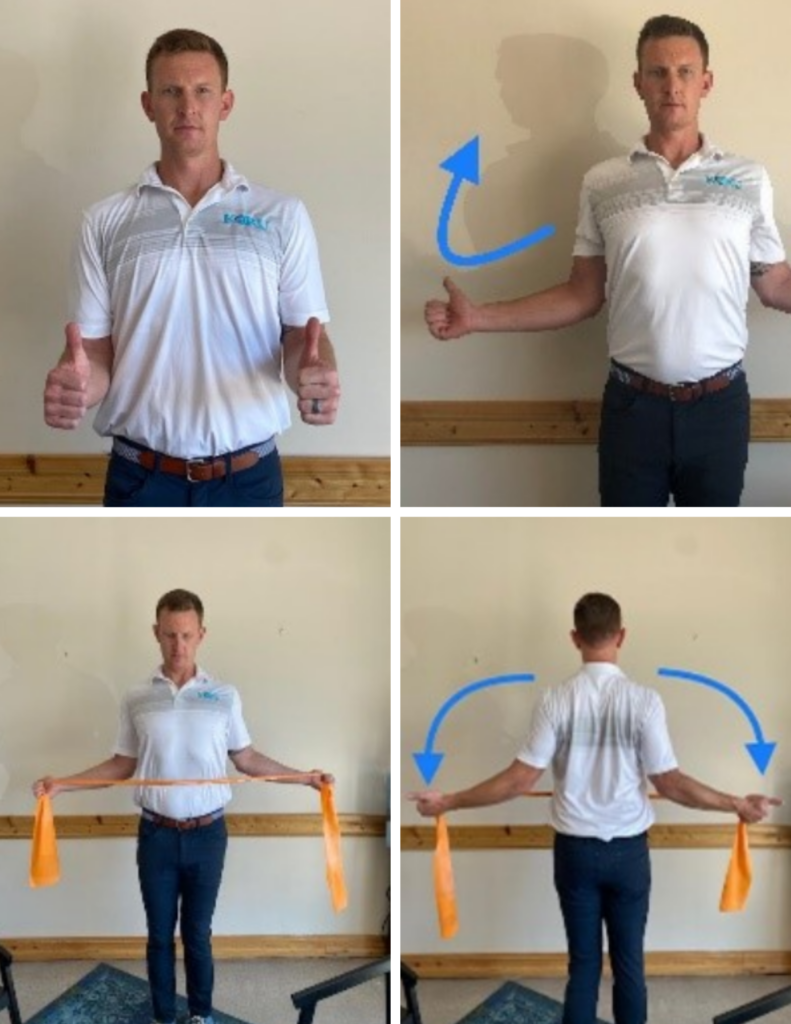
#2 Shoulder CAR (Controlled Articular Rotation)
To begin this mobility exercise start with a small block or foam roller and pin your knee to the wall to stabilize your body and engage your core.
- Outreach your arm and push your inside hand against the wall, thumb down (hand pronated).
- Move your arm and hand from 9 o’clock to 3 o’clock and then back again, while keeping your chest facing forward and minimal movement in your body other than the shoulder joint itself.
- Use this as a test is very difficult, poor form or painful. If not painful and form is correct, do 6-8 reps per side, 1-2 times per day
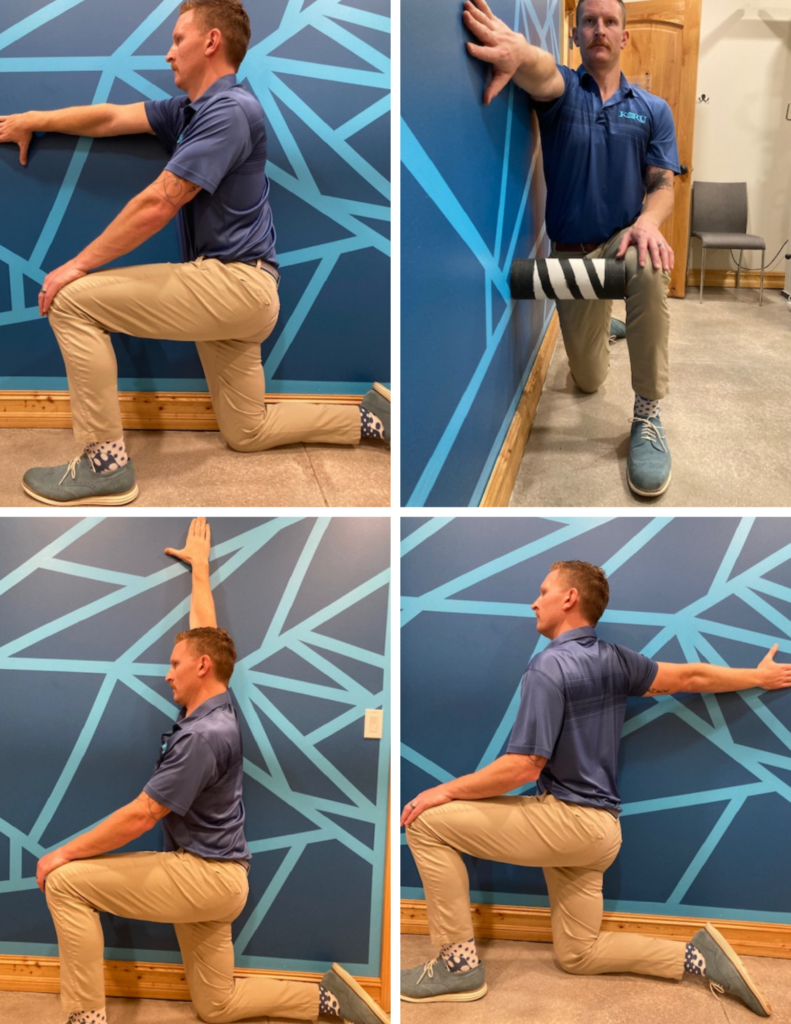
#3 Pec Stretch
To begin this stretch, start by placing your hand at a 90 degree angle on a door frame,
- Bring your opposite leg slightly forward to stabilize your body.
- Lean your body forward until you feel the stretch throughout your chest.
- Do this stretch for 30 seconds then switch sides. Repeat 2-3x a day or as needed.
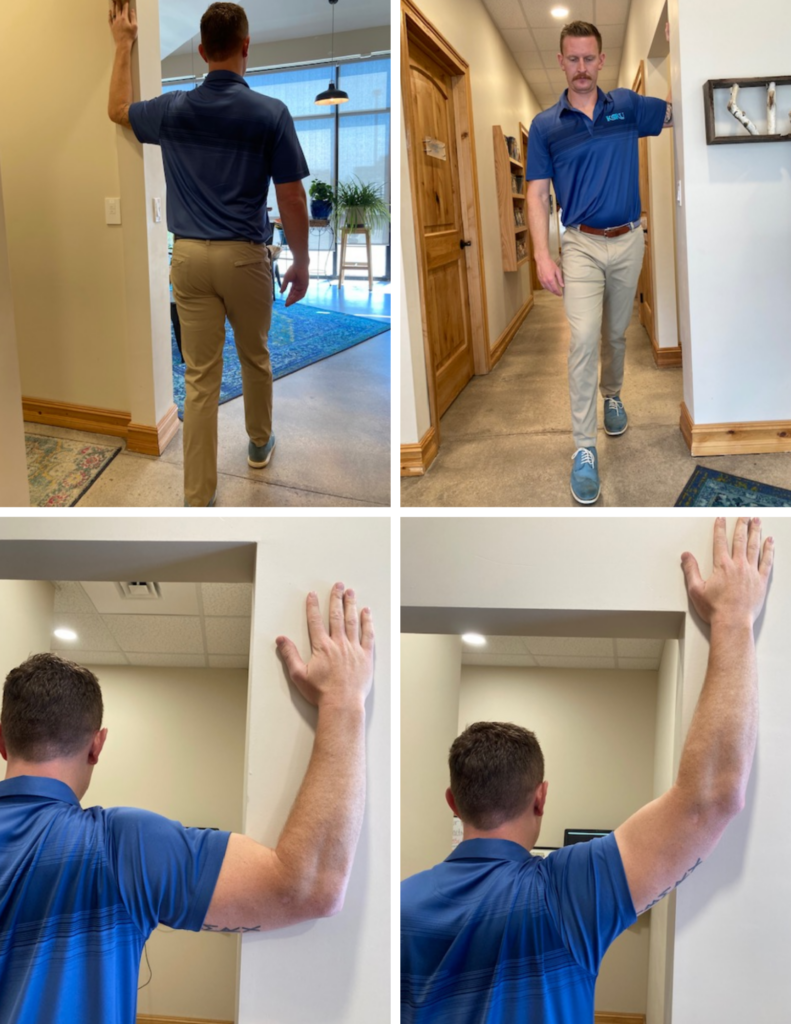
Another variation for this stretch to focus on stretching the pec minor is changing your arm from a 90-degree angle to a 45-degree angle. You can do this stretch 30 seconds on each side 2-3x a day or as needed.
#4 Lat Stretch
To begin this stretch you want to start by grabbing a firm grasp of a doorframe. You want your feet to be shoulder-width apart parallel and the floor.
- After having a firm grasp of the door frame sink down slowly into the stretch by keeping head down and butt out.
- Make sure you come out of this stretch slowly.
- Do this stretch 30 seconds each side,2-3x a day or as needed
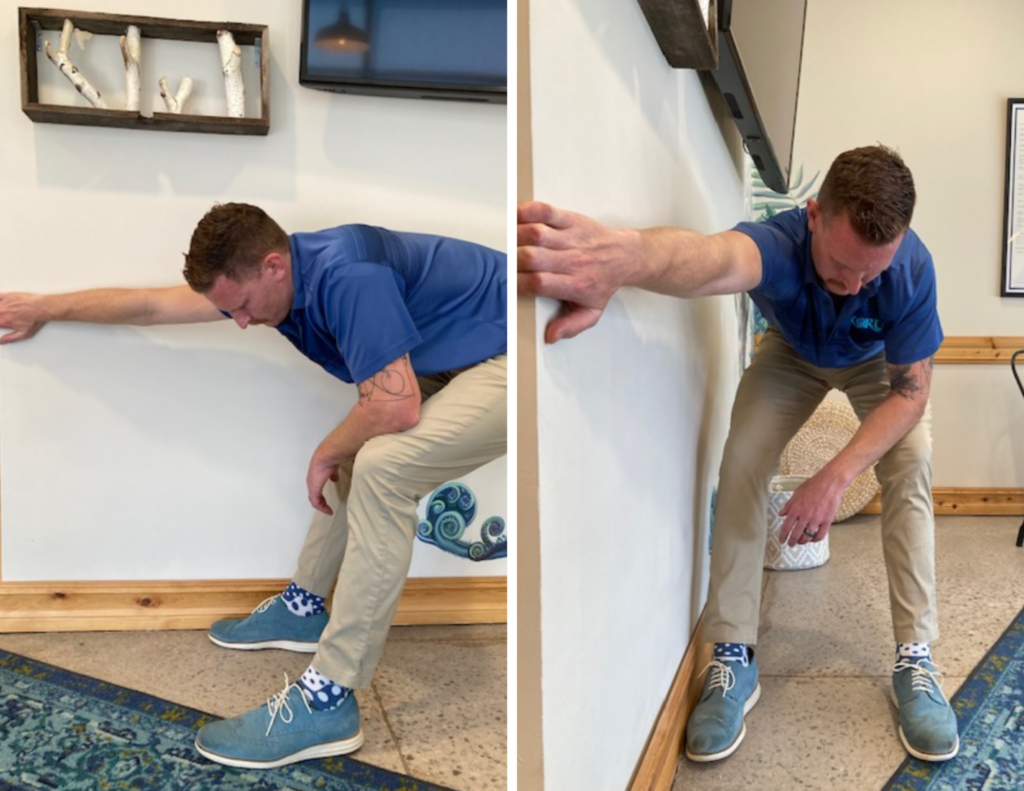
#5 Wall Angels
- Stand against the wall.. heels, hips, and shoulders are flush against the wall.
- Put your arms up at a 90-degree angle like a cactus.
- Keep your shoulders, elbows, wrists, and back of your hands against the wall as you move up like a snow angel.
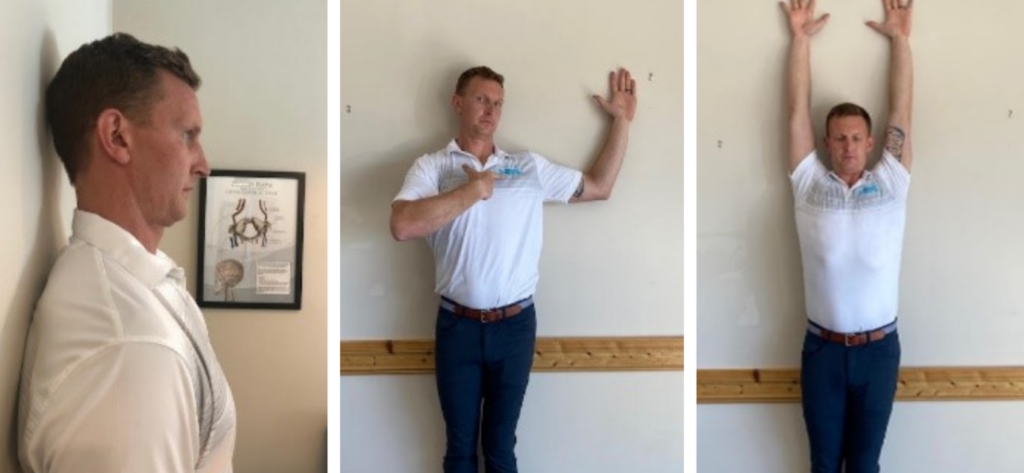
BONUS
Chin Tucks:
Chin tucks help strengthen the muscles that help keep your head pulled back in good posture with the ears above the shoulders, even if you don’t have pain this a great maintenance exercise.
- Make a double chin as you pull your chin and head backwards towards the wall.
- Press the back of your head firmly into the wall for 3 sec at a time while maintaining contact with your shoulder blades.
- Repeat 10x, do 2-3x per day. Especially with long periods of sitting and tech time.
![]()
I hope this helps! With my patients, we are pairing exercises like these with specific but gentle adjustments to the spine to help increase the range of motion, decrease pain, and improve neurological function. Other than someone who had a significant partial or complete tear of their rotator cuff we typically see great results in a few short weeks if not immediately!
Be well,
Dr. Norris
